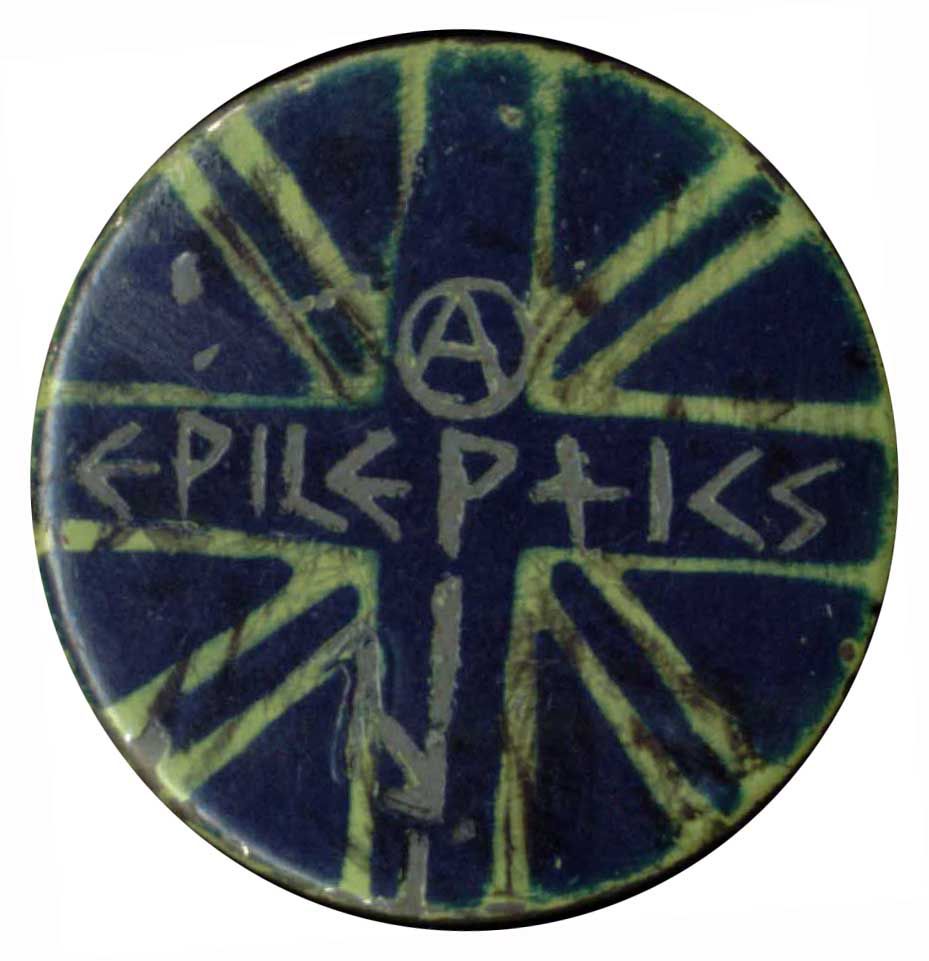
I am massively indebted to Adrian of auralsculptors.blogspot.com who had an original tape of this Epileptics performance from the summer of 1979 that has been uploaded onto this post this Christmas morning and to my KYPP comrade in arms, Dave Sez from Bishops Stortford who not only would have been in the Triad leisure centre audience the very night that this tape was recorded but also, beyond the call of duty, persuaded Adrian to allow me to upload this ancient relic onto KYPP. Thanks to both of those kindly chaps.
This was the tape of the original live performance audio that Derek of Epileptics / Flux Of Pink Indians would have listened to and then decided which tracks to put onto the second Spiderleg 7″ single ‘Last Bus To Debden’.
Whenever I think of Christmas I always think of The Epileptics. That statement is not entirely true, in fact I made it up but whatever, here you go.
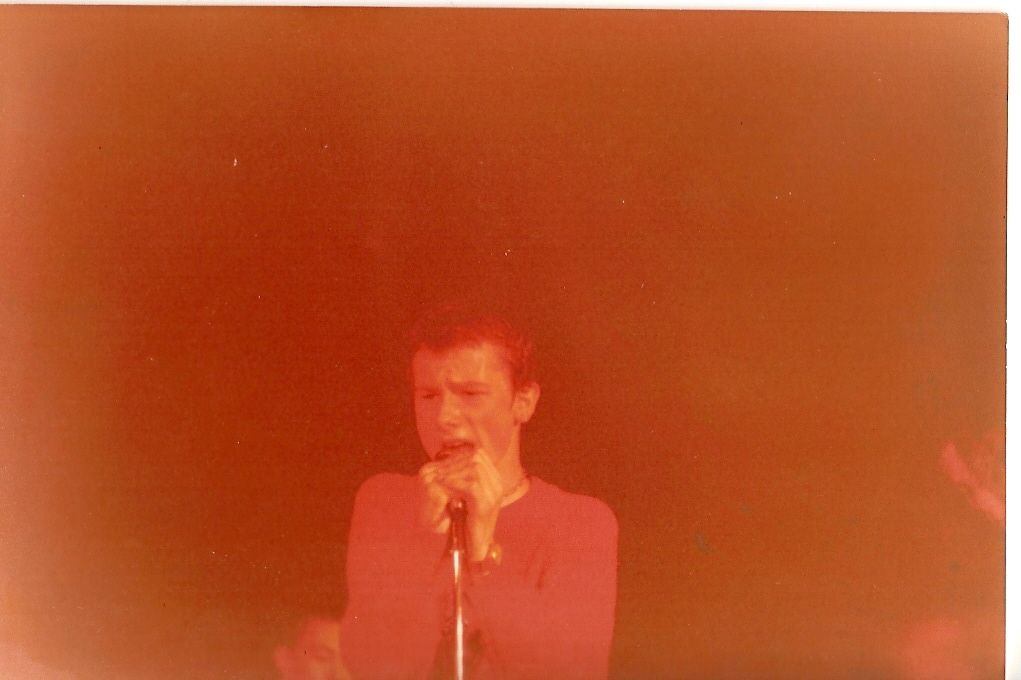
When Flux Of Pink Indians released the ‘Neu Smell’ 7″ single on Crass Records, there was a certain interest in the previous band that Flux had transformed from in Bishops Stortford, Hertfordshire called The Licks (the name of the band if you check their only 7″ single released in the bands lifetime on Harlow’s Stortbeat Records in 1979).
The Licks was a label friendly name used purely for non shock value. The band had been called The Epileptics, but the record label deemed this moniker too offensive to put on a cover of a punk record. The Epileptics performed rudimentary punk rock, a lot of the time at The Triad venue in the town, and generally supported by The Eratics from Waltham Cross, U Samples from Bishops Stortford and Urban Decay from Harlow.
Members of The Epileptics included at one time or another Steve Drewitt from Newtown Neurotics, Stan Stammers later on of The Pack / Theatre Of Hate, Sid from Rubella Ballet and most surprisingly Annie Anxiety. The Epileptics played with Crass at The Triad at least twice, but both bands performed together elsewhere in London several other times.
Crass would eventually support the soon to be named Flux Of Pink Indians through shared gigs and tours, releasing the first Flux single on the Crass record label. Crass and John Loder of Southern Studios also went on to give advice and help to start up Flux’s own label, Spiderleg Records.
The original Stortbeat copy of the first Licks 7″ single ’1970′s Are Made In Hong Kong’ was (and still is) a rarity. Stortbeat records either lost or refused to supply the master tapes for the tracks so Flux (as they band were now called) went into the studio with Penny Rimbaud of Crass sorting out the drumming duties, and recorded both the tracks that were available on that 1979 single again.
This re-recorded version of ’1970′s’ was released as the debut release on Spiderleg Records at the beginning of 1981.
One other interesting fact was that The Epileptics performed at Stonehenge in June 1980, but the bikers would not appreciate the punk vibe on that day so started causing trouble, stopping Crass and Poison Girls from performing thier sets later on that night. The Mob and The Snipers got away with performing sets earlier in the day though. A fair amount of people following the punk band’s that afternoon and night were badly hurt by the much older biker fraternity. This is ironic as both Crass and Poison Girls performed at Stonehenge in June 1979 without any problems. From what I am led to believe, members of Epileptics had insulted some bikers from the stage which may have helped to ignite some of the trouble which was already brewing up.
The ‘Last Bus To Debden’7″ single was also released on Spiderleg records in 1981 composing of tracks recorded at the Triad leisure centre two years previously in 1979.

The Epileptics (Colin Latter – vocals, Clive Griffiths – guitar, Derek Birkett – bass and Richard Coveney – drums) were originally going to be called The Epileptic Fits, a name suggested by Colin’s mum, but the band decided that The Epileptics sounded better. Early in 1978, the fledgling band practised in Clive’s bedroom. Self-penned songs such as “Dear Deirdre”, “I Wanna Give You A ‘69” and “Who’s Chasing Who” were soon put together, and the foursome announced their presence in their home town of Bishop’s Stortford, Hertfordshire that summer with spray-painted graffiti.
Together with their name, they had a logo and a slogan – ‘Smash Guitar Solos‘ – which attracted my interest in a big way. I’d previously been guitarist with the band The Darlex, but as soon as I saw the Epileptics’ DIY publicity campaign I was impressed and wanted a part of their action. First, I had to find out who they were…
The Triad Centre was a great place to see bands and just hang around with other punks from Harlow, including members of the Sods and Newtown Neurotics, and surrounding areas. I asked around and was pointed in Col and Rich’s direction; I went over and said “If you ever need a guitarist, let me know.” Coincidentally, Clive was about to leave and go to college, so they told me to come along the following Saturday to one of their rehearsals. I did, and I was in!
They had already played two gigs – one at Triad in August, and one at London’s Covent Garden with Crass – but needed new material. Col and I reworked some of the older songs and changed the lyrics and titles, and collaborated on some new material too, such as “Tube Disaster”, and our first gig together was at the beginning of November 1978.
In January 1979 we got the chance to support Crass and the Poison Girls in Bradford, but the van we’d hired broke down on the way, and we reached the gig just as Crass were finishing their set. In March we recorded our first demo tape and started to attract a small following; thereafter we regularly played at Triad, as well as doing gigs in London’s Conway Hall with Crass.
For a while we changed our name to Epi-X, but then reverted to the Epileptics; our line-up also changed briefly in summer, when Stan Stammers replaced Derek on bass. (Stan would later go on to Theatre of Hate and Spear of Destiny.) After playing one gig under the pseudonym Acid Experience, with Derek back in, the Epileptics decided to take a break as personality clashes had been surfacing. In August, we were approached by Stortbeat Records to record a single, and – with a dubious change of name to The Licks – did just that in September.
Having played just one gig as The Licks, the name reverted to the Epileptics again, but by November differences in how we thought the band should go led to Richard deciding to leave; Col and Derek decided to get Sid (from Rubella Ballet) to replace him, and within a week of their decision, I made up my mind to leave too. Two guitarists were brought in, Andy Smith and Neil Puncher (previously of the U. Samples), and the band continued to play local, London and other gigs – including Stonehenge Festival where they were bottled offstage.
During the middle of 1980 the band changed their name to Flux Of Pink Indians.
Kev Hunter
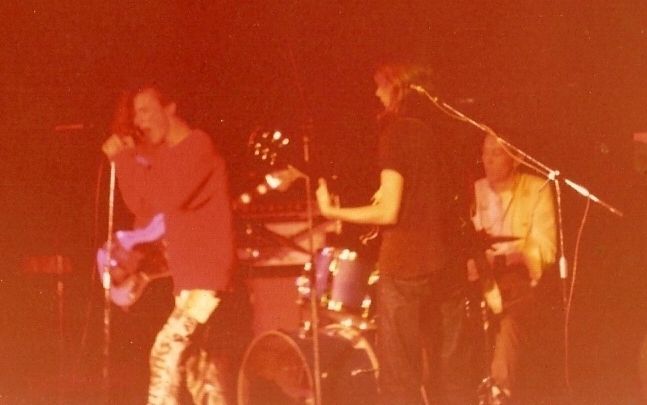
Colour memories above, courtesy of Michael Mitchell.
Written memories above, courtesy of Kev Hunter from The Epileptics, ripped off for all the right reasons from punk77.co.uk site
Black and white memories below, courtesy of Tinsel and the Bowes Lyon House Stevenage.
Verbal memories below, courtesy of Sean ex Eat Shit and God Told Me To Do It. Many thanks to him for the text.
Pagan Christmas origin text courtesy of www.novareinna.com.
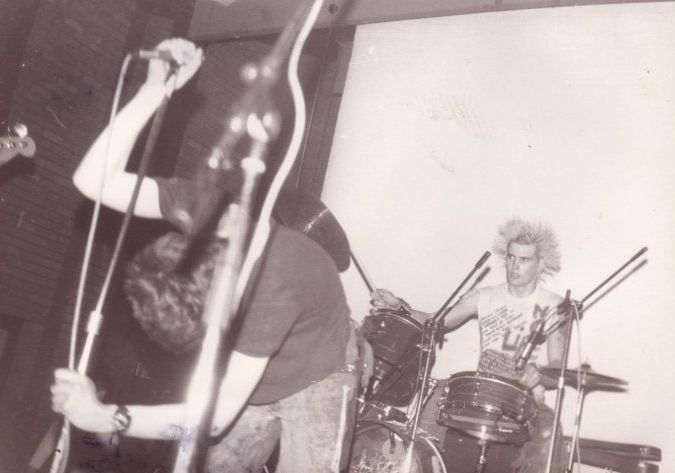
Ahhhhh, my youth revisited…..No one except Stortbeat ever called them The Licks. Derek used to sit on my mate at school to steal his fruit pastilles. The story of Dereks bass playing (as related by Colins little brother) was that when the lads decided to form a punk band, big Derek said “I’m not playing bass, bass is a morons instrument” picked up the waiting to be assigned guitar and promptly broke several strings, so bass it was to be. Funnily enough when a bass was acquired for him he immediately broke a string on that too. Sid of Rubella Ballet passed through the drum slot, as did Discharge skin thumper, Bambi Ellesmere. Stan Stammers was friendly to the young punkers hanging out in Saffron Walden (all three of us, I had school mates there) but Kirk Brandon was above being seen with us kids.
I first saw Crass with The Epileptics at Triad on a sunday night, it seemed strange to me then that no one made a fuss about bands of local notoriety playing on sundays. Stortford was quite lively punkwise, but there was a lot of mod violence early on, mainly by kids who had been punks the year before, the skinheads came later, mostly from Harlow. That town was a hotbed of NF/BM recruitment (the lyric “I’ve got a target on my back but i’m not a fucking mod” was poignent). On one notable occasion, when Conflict came to the Triad, some skinhead violence was nipped in the bud by Colin Jerwood who promptly smashed his mug of tea over the miscreants head. There was even a shortlived squat in Stortford in a condemned house at Hockerill but the coppers gave short shrift.
So many memories…One of my first girlfriends was from Debden, so “Last bus…” struck a chord. Harlow was punky town, but lots of aforementioned skinhead violence. After a gig at the Square, three of us were chased until lost (easy in Harlow, it all looks the same) and had to take cover in an elderly couples house who offered us refuge and a phone to call mum. People will tell you these days that they were into the Neurotics, but most in Harlow considered them a bit naff. Steve Drewitt will tell you that I was the only person to sport a big Newtown Neurotics logo on my leather. Notable local band was Premature Death, who I think made it onto a Crass released ‘Bullshit Detector’ album. We tried squatting an old lock keepers cottage on the river Stort in Sawbridgeworth when I had run away from home (again) but the police went and borrowed my dads big bolt cutters (he was the local lorry engineer / pikey) and put an end to that, and I’ll put an end to this rambling off subject!
Sean Ridgewell
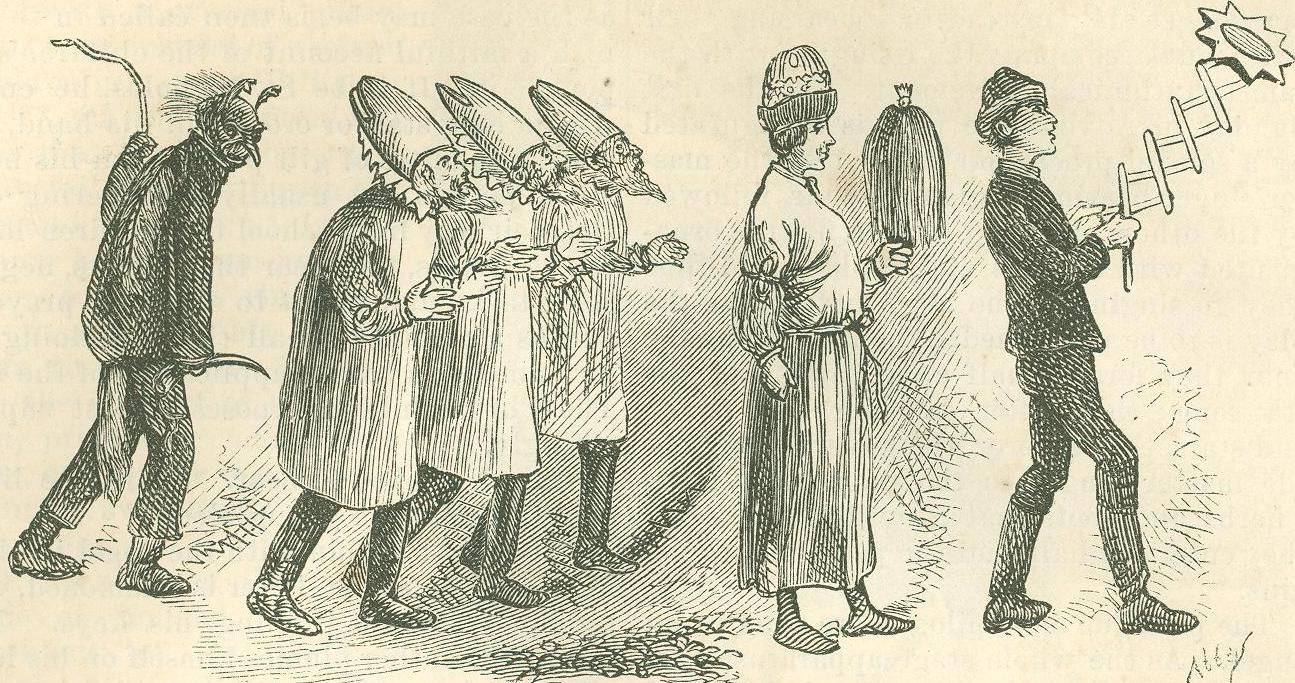
The history of a Christmas festival dates back over 4000 years. Ancient Midwinter festivities celebrated the return of the Sun from cold and darkness. Midwinter was a turning point between the Old Year and the New Year. Fire was a symbol of hope and boughs of greenery symbolized the eternal cycle of creation.
The term “Xmas” instead of “Christmas” is Greek in origin. The word for “Christ” in Greek is “Xristos.” during the Sixteenth Century, Europeans began using the first initial of Christ’s name…the “X” of “Xristos”…in place of the word “Christ” as a shorthand version of the word “Christmas.” Although early Christians understood that the “X” was simply another form for the name of Jesus Christ, later Christians, who had no knowledge of the Greek language, mistook “Xmas” as a sign of disrespect. Eventually, however, “Xmas” came to be both an accepted and suitable alternative to the word “Christmas.”
Many of today’s Christmas traditions were celebrated centuries before the Christ Child was born. The Twelve Days of Christmas, blazing fires, the yule log, the giving of gifts, carnivals or parades complete with floats, carolers who sing while going from house to house, holiday feasts and church processions are all rooted in the customs observed by early Mesopotamians.
Many of these traditions began with the Mesopotamian celebration of the New Year. The Mesopotamians worshiped many gods, the chief of whom was Marduk. Each year as winter arrived, it was believed that Marduk would battle the Monsters of Chaos. In order to assist Marduk during his struggle, the Mesopotamians held a festival for the New Year. They called this celebration Zagmuk and the festivities lasted for twelve days.
The King of Mesopotamia would return to the Temple of Marduk and swear his faithfulness to the god. The tradition called for the King to die at the end of the year and then return with Marduk to battle at his side. To spare their King, the Mesopotamians utilized a “mock” king. A criminal was chosen and dressed in royal clothes. He was given all due respect and the privileges of a true king but, at the end of the celebrations, the “mock” king was stripped of the royal garments and then put to death, thus sparing the life of the real monarch.
The ancient Persians and Babylonians celebrated a similar festival which they called the Sacaea. Part of that celebration included the exchanging of places within the community…slaves would become masters and the original masters were obliged to obey the former slaves’ commands.
In Scandinavia during the winter months, the Sun would disappear for great lengths of time. After thirty-five of such dark days, scouts would be dispatched to the mountain tops to await the return of this life-giving heavenly body. When the first light was espied, the scouts would hurry back to their villages bearing the good news. In celebration, a great festival would be held, called the Yuletide, and a special feast would be served around a fire burning with the Yule log. Huge bonfires would also be lit to celebrate the welcome return of the Sun. In some areas, people would tie apples to the branches of trees as a reminder that Spring and Summer would eventually return.
The ancient Greeks held ceremonies similar to those of the Zagmuk and Sacaea festivals. The purpose of this feast was to assist their god Kronos, who would battle against the god Zeus and his army of Titans.
Members of the pagan order have always celebrated the Winter Solstice…the season of the year when days are shortest and nights longest. It was generally believed to be a time of drunkenness, revelry and debauchery. The pagan Romans called this celebration Saturnalia, in honor of their god Saturn. The festivities began in the middle of December and continued until January 1st. On December 25th, “The Birth of the Unconquerable Sun” was celebrated, as the days gradually lengthened and the Sun began to regain its dominance. It is a general pagan belief that the Sun dies during the Winter Solstice and then rises from the dead. With cries of “Jo Saturnalia!”, the Roman celebration would include masquerades in the streets, magnificent festive banquets, the visiting of friends and the exchange of good-luck gifts known as Strenae…or “lucky fruits.” Roman halls would be decked with garlands of laurel and green trees, adorned with lighted candles. Again, as with Sacaea, the masters and slaves would exchange places.
Saturnalia was considered a fun and festive time for the Romans, but Christians believed it an abomination to honor such a pagan god. The early converts wanted to maintain the birthday of their Christ Child as a solemn and religious holiday…not one of cheer and merriment, as was the pagan celebration of Saturnalia.
As Christianity spread, however, the Church became alarmed by the continuing practice among its flock to indulge in pagan customs and celebrate the festival of Saturnalia. At first, the holy men prohibited this type of revelry, but it was to no avail. Eventually, a decision was made to tame such celebrations and make them into a festive occasion better suited to honor the Christian Son of God.
According to some legends, the Christian celebration of Christmas was invented to compete against the pagan festivals held in December. The 25th was sacred not only to the Romans, but also to the Persians whose religion of Mithraism was one of Christianity’s main rivals at that period in time. The Church was, however, finally successful in removing the merriment, lights and gifts from the Saturanilia festival and transferring them to the celebration of a Christian Christmas.
Christmas means “Christ’s Mass” and is the celebration of Jesus Christ’s birth and baptism. Although December 25th is generally accepted as being the time when the Christ Child was born, the exact date has never been chronicled with any degree of accuracy. There is neither scriptural nor secular evidence to establish the exact moment. One thing is relatively certain, however, the event did not take place in December. Since the child was born when shepherds were “abiding in the field, keeping watch over their flocks by night” (Luke 2:8), it is unlikely that shepherds in Israel would have been sleeping outside with their flocks during the month of December. In Winter, the herders would have led their sheep outside only during the daylight hours…the nights would have been far too cold. It is known that during the very early Christian centuries, the birth of the Christ Child was not celebrated in any manner. However, tradition dictates that the occasion has been commemorated since 98 A.D. In 137 A.D., the Bishop of Rome ordered that the birthday of Jesus Christ be observed as a solemn feast. In 350 A.D., Julius I (another Bishop of Rome) selected December 25th as the observance of Christmas. This date was made official in 375 A.D., when it was formally announced that the birth of Jesus would be honored on this day…the announcement also allowed some of the older festivities (such as feasting, dancing and the exchange of gifts) to be incorporated into the observance of Christmas. The use of greenery to decorate homes continued to be prohibited as pagan idolatry but, over the centuries, this too became an accepted custom of the festivities.
Wishing all the KYPP browsers nation and worldwide a happy Christmas.
Just Insane
December 27, 2012 at 9:31 pmExcellent band – thanks.
vincent
December 29, 2012 at 1:44 pmwhat is the correct date for that gig? on the cds where we can find some tracks taken from it, it is listed as september 5th, not august 5th
Penguin • Post Author •
December 30, 2012 at 1:14 pmMy typing error… 05/09/79 is the correct date for the gig. This is incidentally the date that is on the second Spiderleg records release ‘Last Bus To Debden’ sleeve artwork.
Lauren
February 3, 2015 at 9:45 amFunny how people’s memories play tricks on them enabling them to rewrite history… Still if the Americans can do it…
Dave Sez
March 24, 2016 at 6:03 pm“I’m a year too late, too late, too late for what?” Nah, seriously, if you liked this, Adrian has come up with another goodie, a live gig from 1980 when the Epileptics had changed name to Flux. Get it and thank the man over here:
http://auralsculptors.blogspot.com/2016/03/flux-of-pink-indians-action-space.html
cheers Dave Sez.